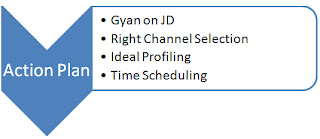The current business demands is on all support functions in all industries and businesses. Outsourcing and consulting contracts are eating into the traditional security that many classic support specialists have enjoyed. It is not enough to just deliver good transactional services. In today’s environment if you are not adding value it is not long before someone starts asking challenging questions about the value-added of IT, Internal Audit, Finance.
For HR the pressure is strong. Business leaders want more from their HR support professionals. They are seeking a more proactive and challenging role that forces managers to think about how they are leveraging people and the organization for business success. New business requirements need new HR skills and competences to make the transition to a big performance Business Partner.
David Ulrich introduced the HR business partner in his book
‘HR Champion’.
A HR Business Partner (HRBP) works with business to add real strategic value. A HRBP has to understand the business, have an insight into the people challenges and the ability to make effective links between the two.
Till date a HR worked in foundation HR practices as
- Talent management
- Outsourcing
- Performance management
- Diversity management
- Graying population
- Down Turn
- Cost optimization
- Leadership development
- Engagement and empowerment.
HR jobs that focus on processes and systems are already becoming redundant. Much of the transactional work of HR such as payroll, employee policies, training administration, and so on, is being automated, centralized or outsourced.
Emerging HR practices are organization design, executive leadership development, work process design, internal communication etc. Being able to create increasing returns from intangibles presents tremendous opportunities for HR professionals because the only way intangibles gain value is through people. “The benefits intangible investments yield is the only means companies can use to escape intensifying competitive pressures.” Baruch Lev, Harvard Business Review, June 2004.
This situation creates a compelling argument that to drive profitable growth from intangibles, this asset class must be systemically managed by HR. But to seize this opportunity HR departments and professionals must fundamentally transform their roles.
Changing HR mission
· The human resource function must lead change and adapt to the changing nature of work in order to remain effective
· The successful HR function provides the link between strategy, people and results
· Human resource priorities and programs must be aligned with the strategy and work culture of specific organizational units
· Human resource programs must operate as an integrated system
HR as valued business partner needs to lead a transition from existing ‘traditional’ role to a new dynamic personality. HRs need to be in proactive mode rather than the existing reactive mode, they need to move from the role of employee regulators and create self sufficient employees. As add on to the current activities of benefits, policy, wage etc; they need to in-source, out-source and re-engineer HR process to improve performance and organization. New horizons of HR should target on results and future rather than know-how or program design.
To become a change-agent and business partner HRs need to have certain competencies like
- Exhibit understanding the business
- Help leaders to think new way in business
- Develop and implement HR solutions to meet business needs
- Build credibility
- Influence change
- Impact the client’s thinking
- Participate in decision making
- Challenge constructively
Wind up:
HR business partnering is a process whereby HR professionals work closely with business leaders and/or line managers to achieve shared organizational objectives, in particular designing and implementing HR systems and processes that support strategic business aims. This process may involve the formal designation of ‘HR business partners’, that is HR professionals who are embedded within the business, sometimes as part of a wider process of restructuring of the HR function.
However, it is important to note that many varying definitions of HR business partnering exist and, where HR business partners operate, there are wide variations in their role.
- HR is shifting from a focus on compliance and control to building strategic business partnerships to support line management.
- The value added of HR will come from leading strategic change and ensuring alignment between business strategy and talent management priorities
- Thinking strategically, building partnerships and influence will be key differentiators for successful HR business partners
- Becoming an HR business partner requires more than changing behavior, it requires a change in self-perception.


